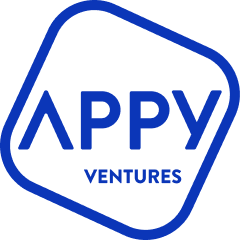Creating a successful mobile app startup business (or any startup, for that matter) is a life-changing affair. I wanted to give a rough step by step guide of what you can expect to need to achieve in the first 6 months or so into your mobile app build journey. Mapping out this journey and sticking to it as closely as possible will help you reach your goals.
As you move forward with your app development ensure you refer back to this timeline regularly to ensure you stay on track and don’t get distracted by technicalities.
Keep in mind that these are rough time frames, so these can be condensed based on your available time.
Concept Phase of your App Startup
Week 1 – Come up with an idea, refine it and test it by discussing with friends and family you can trust to give you an honest opinion — then build a lean canvas.
Week 2 – Design user journeys and wireframes of the key screens.
Week 3 – Design branding and screens (either yourself or recruit someone).
Week 4 – Create a prototype and run user testing to get feedback. There are websites to help you do this, or as above, seek professional help if you have the funds.
This can be done in 1-2 weeks if you have the time and money to get support.
Testing Phase
Week 5 – Create a landing page with your prototype and research keywords.
Week 6 – Launch Adwords campaign to see how users interact with your offer and build an email list.
Week 7 – Iterate prototype and messaging of landing page.
Week 8 – Keep building an email list of interested leads until launch.
The fastest I’ve done and seen positive results from this phase is <24hrs. This is how Dropbox was created: All from a video of the prototype they had built!
Planning Phase
Week 9 – Now that you have gathered key feedback, it’s time to plan the product roadmap and think about the team you will need to succeed.
Week 10 – Build out your business plan and financial model.
Week 11 – Build the presentation you plan to give to potential investors/stakeholders/partners. Test on trusted friends and family!
Week 12 – Present to relevant people for seed investment (or crack on yourself if you can since investment raising can take months).
This may not be what you envisioned, but by following these structures you will help yourself save time, money and considerable headaches.
Building Phase
Week 13 – Assuming investment is available, find a trustworthy team of experts you can afford to support you.
Week 14 – Kick off workshop and project planning.
Week 15 – 18 – Build Sprint 1, test and plan next sprint.
Week 19 – 20 -Build Sprint 2, test and plan next sprint, etc.
Carry on until you have a MVP (Minimum Viable Product) ready for launch.
Marketing Phase
Week 15: In parallel, start planning your marketing strategy. There are lots of online resources to help with this, for example, https://pmwcom.co.uk/how-to-write-a-marketing-plan/
Week 16: Create all social channels and prepare 10-12 weeks of content for all channels important to you. Lots of tools to help with idea generation here too, for example, https://miro.com/aq/ps/mapping-and-diagramming/
Week 17: Create 12 authoritative pieces of content (text with video version and slide share version to maximise use), and relevant email sequences to accompany them.
Week 18: Start contacting relevant press contacts, drip feeding them value-added information that helps them communicate with their audience.
“Failing to plan is planning to fail” as the old adage says… and nothing is more true for startups. You must put a lot of time and effort into developing a solid marketing phase.
Customer acquisition costs and routes to market are all part of business planning and thus should be thought about upfront to ensure that you have profitable clients at the end of the process.
Launch Phase
Week 20: Send the final form press release to your contacts and key influencing bloggers — with an official launch date included.
Week 21: Launch day! Send an email to your list with your “first 100 clients” offer, encourage sharing, send across your social channels, etc. All these messages should be prepared in the marketing phase since you will not have time to think (just execute) during Launch.
Week 22: Follow up with everyone who gets in touch, comments, or has not published you. Share insights with your new community and ask them to help you grow through feedback. Review analytics and insights from actual users!
Week 23: Now you have a moment to breathe, smile, and continue to iterate tech/messaging/marketing to optimise for higher conversion rates.
This is what you’ve been planning for, and by following structures and strategies, you simply need to execute during your launch phase. Luck is luck, but planning puts you in the best possible position to succeed — no excuses, just execution.
Maintain Phase
Week 24: Run market feedback surveys and then build, test, and launch iterations.
Week 25: Prepare larger feature launches, including supporting marketing/press pushes.
Week 26: Rinse and repeat and consider going to speak to investors about funding the next phase: Growth Phase
By this point you should have some users and clients, and now you need to find the right balance of expertise, money, and effort to continue growing at an appropriate pace. Rome was not built in a day… so keep growing strategically!
If you’re serious about moving your idea forward but are struggling due to time or are worried you do not have the experience, check out http://www.appyventures.com/solutions/app-accelerator-idea/ for more information or contact us on team@appyventures.com to discuss coaching and “done for you” services to fast track your startup idea. This will save you time and some expensive lessons.

